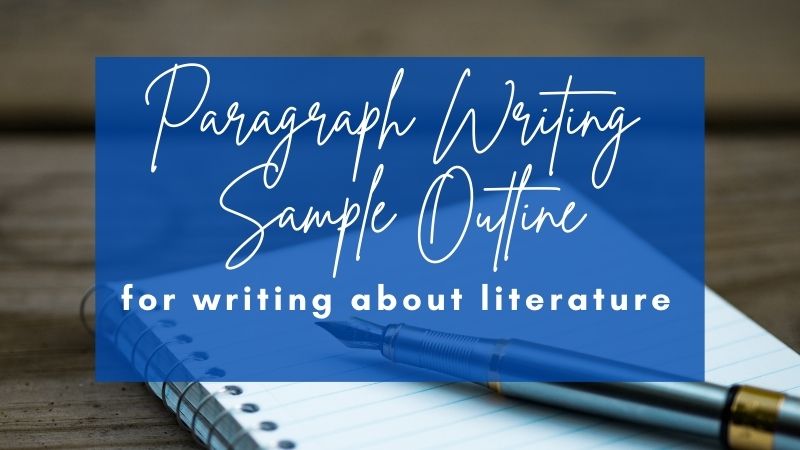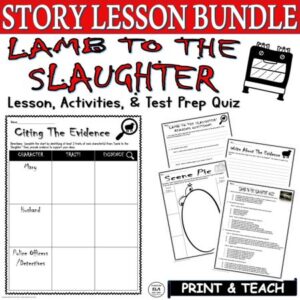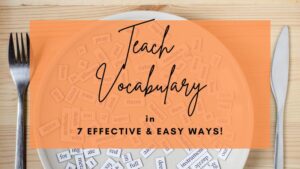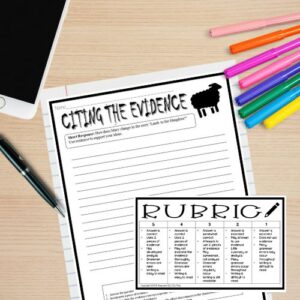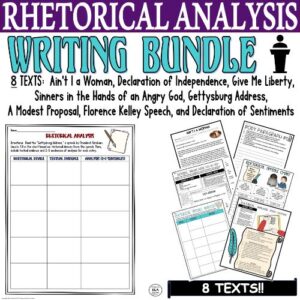My journey into integrated learning began in college with a professor who told me that it didn’t matter what I write or how I write, only that I write. Now, you would think I was thrilled to hear him say that, and initially, I was. When I began my teaching career, I asked 9th-grade English students to write on a variety of topics from their summer trips to special occasions to their hopes for the future without a thought of using a paragraph writing sample as a model.
I dreamed of emulating this professor’s ideals, unknowingly becoming my own lamb to the slaughter. At first, I collected reams and reams of journals with page after page of writing, and I was excited. MY STUDENTS WERE WRITING! That is the goal, right? Unfortunately, I started reading these “journal entries,” and I encountered fragmented thoughts, vague concepts, and incoherent ideas. I realized that asking them to just “write” wasn’t enough. Giving them a topic to write on wasn’t enough. I needed to provide a paragraph writing sample and outline so they had a plan!
The “education” I had received did not prepare me for teaching my students what they needed to know to be successful writers.
Then, it hit me like Mary Maloney’s frozen leg of lamb! Students needed a step-by-step process to achieve a focused piece of writing. And that is what I set out to do.
Read on for a 5-step approach to writing about literature with a paragraph writing sample outline that proved successful with my students and will hopefully be with yours too!

Need help with Test Prep? Check out this FREE Pack of 3 Test Prep Activities to help students achieve success on standardized tests!
1. Read, read, read!
Teachers often feel pressure to teach to a state exam that usually tests students on their ability to read and write. However, this can’t be done in isolation. Maybe you have been dying to teach short stories. If so, why not have students read a variety of short stories while also preparing for the rigor of standardized tests? Two birds, one stone!
A short story that is always a hit with students is Roald Dahl’s “Lamb to the Slaughter.” Dahl’s short story is simple on its surface but its details reveal more depth. The story’s characters, irony, and themes can all be savored (and analyzed) as you read.
Get the done-for-you option with this activities bundle for Roald Dahl’s “Lamb to the Slaughter”! You’ll have reading comprehension questions, a test prep quiz, graphic organizers, and activities with a paragraph writing sample that are aligned with Common Core standards. Plus, it contains questions and answers modeled after various state reading comprehension exams and assessments, so you can engage students with FUN, yet rigorous critical thinking activities!
Complement the whole lesson with Alfred Hitchcock’s TV adaptation of the story, which, despite its age, still captures students’ interest.
2. Discuss what you are reading
Incorporate discussion opportunities in formal and informal ways. You can prepare focused reading questions like these for “Lamb to the Slaughter” that directly connect to the standards. These could be done in small groups or individually. Another option is to have students complete a Socratic Seminar, so they can all learn together.
With these options, students take notes and gather evidence to use in writing tasks.
Want some ideas for teaching vocabulary? Check out this post: “Teach Vocabulary in 7 Easy Ways!”
3. Connect writing to the literature
After discussion, use the results to shift into writing mode. Consider essay or short response prompts that connect with the literature you are reading.
For example, with “Lamb to the Slaughter” students can start with questions like these for initial discussions. But you can push to the next step by getting students to write in more depth about one of the questions. It might be that they examine how the characters, like Mary Maloney, change in the story. They can use the evidence they’ve gathered in their initial discussions and use it in their writing.
This is another opportunity for students to prepare for the state test while enjoying quality literature. By linking the prompt to this short story, you are asking students to master the standard without having to submit to the test prep gods, who usually only offer random selections of questionable literary merit.
4. Model what you want them to do in a paragraph writing sample!
Once students begin the writing process, one of the best options is the I Do, We Do, You Do approach which works wonders and is easy when using a paragraph writing sample outline! In order for students to be successful, they need to see what the end goal is.
Show students how to write short answer responses by doing a talk-through of a step-by-step process. You can show a completed response and explain the parts or actually write one in the moment. This second option is ideal for the “we do” portion so students can see how things can change and shift in writing and that things are never perfect in a first draft. Finally, provide students with some prompts and let them write their own short answer responses.
Need help with teaching students how to cite evidence? Check out this post about citing direct quotations.
5. Provide a Paragraph Writing Sample Outline
The final step in the process is likely the one that might lead students to their greatest success in writing. Give them a sentence-by-sentence paragraph writing sample outline to use as a template.
Such a template can be used for differentiation to address the needs of all students in class. Some students will benefit greatly by following a template and others can use it as a mentor text to guide them to a final product.
Here’s a paragraph writing sample template for “Lamb to the Slaughter” to use for your students.
Sentence 1: Answer the question about (the characterization of Mary from beginning to end) ← this part can change depending on the provided prompt
Sentence 2: Incorporate a piece of evidence
Sentences 3-4: Examine how the evidence conveys a specific effect that connects to (the characterization (trait)) ← this part will also change with a different prompt
Sentence 5: Incorporate another piece of evidence
Sentences 6-7: Examine how the evidence conveys a specific effect that connects (to the characterization (trait))
Sentence 8. Reiterate the elements of the claim (traits of Mary and the purpose of the characterization) ← this part will also change with a different prompt
To ensure students understand the components have them color-code their paragraph. They can highlight in one color for the claim and concluding sentence, another for the evidence, and a final color for the explanation. This way students (and teacher) can quickly see students’ understanding of the components namely what’s missing and/or misidentified.
CLICK THE IMAGE BELOW TO GET AN ENTIRE BUNDLE WITH A PARAGRAPH WRITING SAMPLE AND ACTIVITIES FOR “LAMB TO THE SLAUGHTER!”
Why should we use a Paragraph Writing Sample Outline for almost every writing assignment?
Download your FREE Lesson on FDR’s “Day of Infamy” Speech that includes a model short response using the paragraph writing sample template outlined above.
Be judicious about what and how much you collect and grade. You don’t need to collect every piece of work to monitor progress. With the color-code option, it’s easy to do a quick check as an exit ticket.
Provide students some guidance and time to practice the process. Then indicate you will collect and grade a particular writing sample. Students might write 5-6 paragraphs but only one is eventually graded.
Learn from me, you don’t need to collect reams and reams of paper to know your students are practicing writing and improving when you use these five steps.
Click the bundle below for tons of rhetorical analysis activities and paragraph writing sample outlines!
Need more lessons with activities and paragraph writing sample guides? Check out my store Kristin Menke-Integrated ELA Test Prep!

